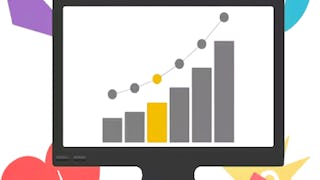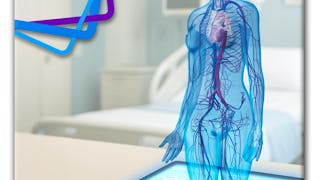Dieser Kurs vermittelt die grundlegenden Kenntnisse, die für Programm-Manager und -Umsetzer eines Programms zur Bekämpfung von Bluthochdruck erforderlich sind, insbesondere in ressourcenbeschränkten Umgebungen. Der Kurs ist interaktiv und enthält nützliche Tipps, die für verschiedene Situationen relevant sind. Der Kurs ist auch für Ärzte, Krankenschwestern, Apotheker, kommunale Gesundheitshelfer und andere Personen geeignet, die sich für die Diagnose und Behandlung von Bluthochdruck interessieren.



Grundlagen für die Implementierung eines Bluthochdruckprogramms

Dozent: Kunihiro Matsushita, MD, PhD
1.708 bereits angemeldet
Bei  enthalten
enthalten
(31 Bewertungen)
Was Sie lernen werden
Die Teilnehmer lernen die wichtigsten Konzepte zur Diagnose und Behandlung von Bluthochdruck kennen und erfahren, wie sie Bluthochdruckprogramme effektiv durchführen können.
Kompetenzen, die Sie erwerben
- Kategorie: Chronische Krankheiten
- Kategorie: Verwaltung von Medikamenten
- Kategorie: Medizinisches Management
- Kategorie: Apothekenbetrieb
- Kategorie: Behandlung von Patienten
- Kategorie: Pflege-Koordination
- Kategorie: Gemeinschaft Gesundheit
- Kategorie: Pflegemanagement
- Kategorie: Lebenszeichen
- Kategorie: Blutdruck
- Kategorie: Öffentliche Gesundheit und Krankheitsvorbeugung
- Kategorie: Verwaltung der medikamentösen Therapie
- Kategorie: Pflegemanagement
- Kategorie: Patientenaufklärung und Unterstützung
- Kategorie: Pharmakotherapie
- Kategorie: Bewertung der Patienten
- Kategorie: Gesundheitsverwaltung
- Kategorie: Klinik-Management-Systeme
Wichtige Details

Zu Ihrem LinkedIn-Profil hinzufügen
6 Aufgaben
Erfahren Sie, wie Mitarbeiter führender Unternehmen gefragte Kompetenzen erwerben.


Erwerben Sie ein Karrierezertifikat.
Fügen Sie diese Qualifikation zur Ihrem LinkedIn-Profil oder Ihrem Lebenslauf hinzu.
Teilen Sie es in den sozialen Medien und in Ihrer Leistungsbeurteilung.

In diesem Kurs gibt es 6 Module
In diesem Modul - Modul 1 - lernen Sie die Grundlagen des Bluthochdrucks kennen, z. B. seine Belastung und seine Komplikationen, und Sie erhalten einen Überblick über zwei Ansätze zur Behandlung des Bluthochdrucks. Sie erfahren, dass Bluthochdruck ein großes Gesundheitsproblem ist und wie man es in den Griff bekommen kann. Gleichzeitig lernen Sie die großen Herausforderungen kennen, die ein effektives und effizientes Management von Bluthochdruck erschweren können. Zum Abschluss werden wir einige Beispiele aus der Praxis von Programmen vorstellen, die diese Herausforderungen gemeistert haben und die Behandlung von Bluthochdruck erfolgreich verbessern konnten. In den Modulen 2 bis 6 erfahren Sie mehr über die Diagnose und Behandlung von Bluthochdruck, optimale Kliniksettings, die Nutzung der Gemeinde als Plattform für die Bluthochdruckbehandlung, die Medikamentenversorgung und Tipps für einen effektiven und effizienten Programmbetrieb.
Das ist alles enthalten
10 Lektüren1 Aufgabe10 Plug-ins
Sobald die Diagnose Bluthochdruck bestätigt ist, sollte das medizinische Personal die Patienten behandeln, um das Risiko von Herzinfarkt und Schlaganfall zu verringern. In diesem Modul werden wir zwei "komplementäre" Behandlungsansätze besprechen: Änderungen der Lebensweise und blutdrucksenkende Medikamente. Änderungen des Lebensstils wirken sich sowohl auf den Blutdruck als auch auf die Gesundheit im Allgemeinen positiv aus. Da Änderungen des Lebensstils nicht einfach zu bewerkstelligen und noch schwieriger beizubehalten sind, benötigen die meisten Patienten mit Bluthochdruck auch ein oder mehrere blutdrucksenkende Medikamente. Wir werden lernen, dass Bluthochdruck bei den meisten Patienten durch die Einhaltung eines einfachen Medikamentenprotokolls kontrolliert werden kann. Diese Protokolle sind vor allem in ressourcenbeschränkten Umgebungen nützlich, da sie die Beschaffung von Medikamenten und die Behandlungsprozesse in den Kliniken vereinfachen und die Einführung eines Bluthochdruckprogramms in jeder von Ihnen betreuten Gemeinde ermöglichen. Das Verständnis dieser Grundlagen ist für die Konzeption, Planung und Durchführung erfolgreicher Bluthochdruckprogramme unerlässlich.
Das ist alles enthalten
7 Lektüren1 Aufgabe7 Plug-ins
Die medizinische Klinik ist der wichtigste Ort, an dem Bluthochdruck diagnostiziert und behandelt wird. Obwohl es keine fundierte Schätzung gibt, ist es wahrscheinlich, dass es mehr als 1 Million Kliniken auf der Welt gibt. Medizinische Kliniken unterscheiden sich von Land zu Land und sogar innerhalb eines Landes, was die Anzahl und die Art der Mitarbeiter und der Ausstattung angeht. Obwohl jede Klinik einzigartig ist, gibt es einige Schlüsselelemente, die eine Klinik effektiv und effizient für die Behandlung von Bluthochdruck machen. Entsprechend geschultes Personal und angemessene Einrichtungen für ein effektives Hypertoniemanagement sind von entscheidender Bedeutung, und die meisten Kliniken verfügen bereits über diese Voraussetzungen. Außerdem sollten die Mitarbeiter der Kliniken mit den Patienten zusammenarbeiten, ihre Bedürfnisse erkennen und dafür sorgen, dass die Klinik für sie zugänglich ist. Dieses Konzept wird als "patientenzentrierte Pflege" bezeichnet Lassen Sie uns in diesem Modul einen Blick auf die wichtigsten Merkmale von Kliniken für die Kontrolle von Bluthochdruck werfen.
Das ist alles enthalten
6 Lektüren1 Aufgabe7 Plug-ins
In diesem Modul lernen Sie verschiedene Umgebungen in der Gemeinde kennen, in denen Sie gute Möglichkeiten zur Kontrolle des Bluthochdrucks vorfinden können. Sie werden auch lernen, wie Sie die Aufgaben zwischen Teams von Mitarbeitern mit unterschiedlichem Hintergrund, wie z. B. Gemeindegesundheitshelfern, Krankenschwestern, Apothekern, Ärzten und anderen, aufteilen können, um eine effiziente und effektive Versorgung zu gewährleisten. Wir werden Ihnen Beispiele aus der Praxis von gemeindebasierten Programmen vorstellen, mit denen die Kontrolle des Bluthochdrucks erfolgreich verbessert werden konnte. Sie werden auch die Schlüsselfaktoren kennenlernen, die diese Bluthochdruckprogramme in der Gemeinde zu einem Erfolg gemacht haben.
Das ist alles enthalten
5 Lektüren1 Aufgabe6 Plug-ins
In diesem Modul werden wir die Grundlagen der Medikamentenversorgung besprechen und einige Tipps zur Überwachung und Verwaltung von Medikamentenbeständen geben. Wir werden auch einige Herausforderungen bei der Medikamentenversorgung aufzeigen und mögliche Lösungen diskutieren. All diese Punkte sind entscheidend für die Verbesserung der Medikamentenversorgung und des Zugangs zu Medikamenten in Hypertonieprogrammen.
Das ist alles enthalten
4 Lektüren1 Aufgabe5 Plug-ins
In diesem Kurs haben Sie die wichtigsten Konzepte zur Diagnose und Behandlung von Bluthochdruck kennengelernt. Sie können beschreiben, warum Bluthochdruck wichtig ist und welche Möglichkeiten es gibt, ihn zu behandeln. Für erfolgreiche Programme zur Kontrolle des Bluthochdrucks reicht dieses Wissen jedoch nicht aus. Warum eigentlich? Weil das Wissen in jedem Einzelnen steckt und ein Programm eine Reihe von Personen mit unterschiedlichen Werten und Gedanken benötigt, die gemeinsam und effektiv auf die gleichen Ziele hinarbeiten. Es gibt mehrere Schlüsselelemente, damit ein Programm (nicht nur für Bluthochdruck) erfolgreich umgesetzt werden kann. Da es andere Ressourcen oder Kurse gibt, die diese Elemente speziell und umfassend zusammenfassen, werden wir sie in diesem Modul nicht alle behandeln. Wir werden uns auf die folgenden drei konzentrieren, die wir für besonders wichtig halten: Programmplanung, Programmüberwachung und -bewertung sowie Kommunikation
Das ist alles enthalten
4 Lektüren1 Aufgabe5 Plug-ins
Dozent

Mehr von Öffentliche Gesundheit entdecken


Yale University


University of Colorado System


Microsoft
Warum entscheiden sich Menschen für Coursera für ihre Karriere?





Neue Karrieremöglichkeiten mit Coursera Plus
Unbegrenzter Zugang zu 10,000+ Weltklasse-Kursen, praktischen Projekten und berufsqualifizierenden Zertifikatsprogrammen - alles in Ihrem Abonnement enthalten
Bringen Sie Ihre Karriere mit einem Online-Abschluss voran.
Erwerben Sie einen Abschluss von erstklassigen Universitäten – 100 % online
Schließen Sie sich mehr als 3.400 Unternehmen in aller Welt an, die sich für Coursera for Business entschieden haben.
Schulen Sie Ihre Mitarbeiter*innen, um sich in der digitalen Wirtschaft zu behaupten.
Häufig gestellte Fragen
Der Zugang zu Vorlesungen und Aufgaben hängt von der Art Ihrer Einschreibung ab. Wenn Sie einen Kurs im Prüfungsmodus belegen, können Sie die meisten Kursmaterialien kostenlos einsehen. Um auf benotete Aufgaben zuzugreifen und ein Zertifikat zu erwerben, müssen Sie die Zertifikatserfahrung während oder nach Ihrer Prüfung erwerben. Wenn Sie die Prüfungsoption nicht sehen:
Der Kurs bietet möglicherweise keine Prüfungsoption. Sie können stattdessen eine kostenlose Testversion ausprobieren oder finanzielle Unterstützung beantragen.
Der Kurs bietet möglicherweise stattdessen die Option 'Vollständiger Kurs, kein Zertifikat'. Mit dieser Option können Sie alle Kursmaterialien einsehen, die erforderlichen Bewertungen abgeben und eine Abschlussnote erhalten. Dies bedeutet auch, dass Sie kein Zertifikat erwerben können.
Wenn Sie ein Zertifikat erwerben, erhalten Sie Zugang zu allen Kursmaterialien, einschließlich der benoteten Aufgaben. Nach Abschluss des Kurses wird Ihr elektronisches Zertifikat zu Ihrer Erfolgsseite hinzugefügt - von dort aus können Sie Ihr Zertifikat ausdrucken oder zu Ihrem LinkedIn-Profil hinzufügen. Wenn Sie die Kursinhalte nur lesen und ansehen möchten, können Sie den Kurs kostenlos besuchen.
Sie haben Anspruch auf eine vollständige Rückerstattung bis zwei Wochen nach Ihrem Zahlungsdatum oder (bei Kursen, die gerade erst begonnen haben) bis zwei Wochen nach Beginn der ersten Sitzung des Kurses, je nachdem, welcher Zeitpunkt später liegt. Sie können keine Rückerstattung erhalten, sobald Sie ein Kurszertifikat erworben haben, auch wenn Sie den Kurs innerhalb der zweiwöchigen Rückerstattungsfrist abschließen. Siehe unsere vollständigen Rückerstattungsbedingungen.
Weitere Fragen
Finanzielle Unterstützung verfügbar,


